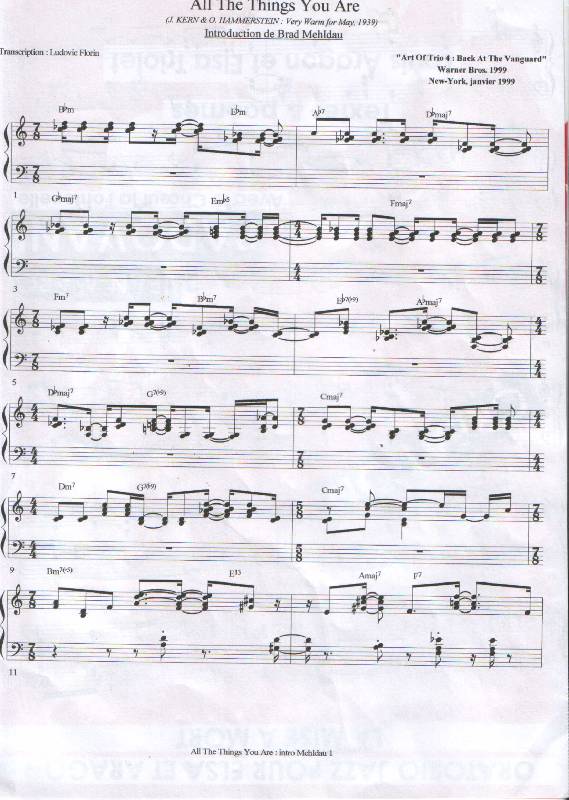Elegiac Cycle Brad Mehldau Transcription Pdf To Jpg


Virtuosic pianist Brad Melhdau first made his mark in the jazz world in 1995 with his debut recording Introducing Brad Mehldau. Elegiac Cycle. A “scrolling” transcription of Mehldau’s performance here of his own composition. Elegiac Cycle. Brad Mehldau Live in Marciac. Storm (Mehldau). This page contains links to PDF files of various transcription work I’ve done. Brad Mehldau Bard. Three tunes, all from Brad's first solo album, Elegiac Cycle.
Virtuosic pianist Brad Melhdau first made his mark in the jazz world in 1995 with his debut recording Introducing Brad Mehldau and then in the classical arena in 2006 with his release Love Sublime with vocalist Renee Fleming. J2me Bluetooth Serial Port Example. Mehldau is a dazzling and brilliant player who maintains one of the finest trios in all of jazz. The group’s ongoing series of recordings which started in 1997 and aptly titled The Art of the Trio is an impressive body of work that is still evolving and has become the benchmark of excellence for any working jazz group. Mehldau has also developed into a fine composer in both jazz and classical styles as exemplified by his two releases of 2010, Highway Rider and Love Songs (with Anne Sofie von Otter). But for me, it is in Brad’s solo works and performances where you really get a chance to experience the breadth of what this talented artist is all about.
He is now releasing his third solo recording, Live in Marciac following Elegiac Cycle and Live in Tokyo. The latest features two CDs and a live DVD companion of the concert. What makes his solo outings and the Live at Marciac recording so exciting is the repertoire that he incorporates into his performances. His blend of jazz and classical styles, the American Songbook, unique covers of pop tunes and originals all seamlessly blend into a fulfilling and varied musical experience.
His breathtaking command of his instrument is undeniable. But what he is able to say musically as a soloist within the context of each song combined with his improvisations is simply masterful. I have interviewed Brad many times over the years but this is the first time we focus exclusively on his approach to his solo work. Bastelbogen Flugzeugtrager here.
The core of your playing successfully balances jazz and classical influences. Can you describe how you negotiate between the two styles in your playing? I draw on a lot of classical music, pop and rock music, music from Brazil, and other stuff. I listen to it for pleasure and enjoyment, and then a lot of it filters out in my playing. With classical music, there’s a written canon there – you can study those scores. There’s a good three centuries of stuff to check out – it’s endless. Ultimately I think of myself as an improvising jazz musician at the end of the day, and one of my talents I guess is assimilating all of that written stuff and making it part of what I do.
Tell us about the challenge and thrill of playing solo? The challenge and the thrill are one and the same – there is no net; there is absolute freedom. When jazz musicians improvise in a group setting, they are often following some sort of schema – often it’s variations on the initial theme of whatever they are playing. World Groove Trf Rarlab on this page. When you are playing solo, you don’t have to correspond to what someone else is doing. So you might take that approach, but you might decide to chuck it out at a certain point and go off on a tangent that doesn’t formally adhere to what you’ve just been doing. That can be exciting and rewarding. The challenge there though is to make something with integrity – something that has a story to tell.
Comments are closed.